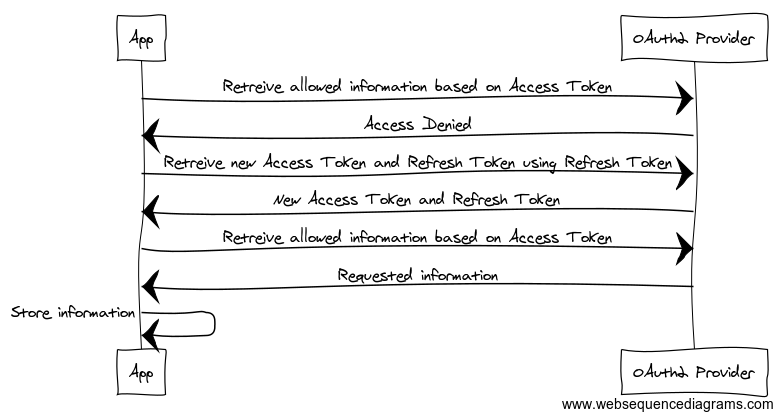I’m sure you have about 10,000 pictures all in one big folder with no organization, multiple copies, and a wishful intent of organizing it. When you finally find the time to sit down and do your organizing, the task seems so insurmountable, you suddenly realize you forgot to scrub your kitchen floor, do the laundry, weed the garden, and complete every other chore you’ve been putting off! I was there — I made it through.
Vision
I was inspired by Timehop, of all things, when I sat down to organize all of my photos. The intention was that I would combine my entire family’s photos together, organized chronologically. Timehop, for those of you who don’t know, connects to your social media accounts (Facebook, Twitter, Instagram, Google Photos, and Dropbox) to gather your pictures. Each day, Timehop shows you pictures on that day from from your history. It’s pretty fun watching your kids grow up and seeing how much they have grown each day. I quickly found that, while Timehop is pretty great, it requires pictures. I’m not the big picture taker in the family, my beautiful wife is, so my Timehop was barren and her Timehop was full of all the pictures. This made me sad, but also inspired me to bring all of our pictures together (along with all the other pictures I had sitting around on several devices). So here’s what I did to bring my vision to life.
The Work
I started by bringing all of my pictures from all of my devices to my computer. I had to find an SD card reader, the power cord from my old Nikon camera (circa 2001), a plethora of CDs, all the odd folders on my PC, the photo folders I had on Dropbox, and the photo folders I had in Google Drive and bring them together in one place on my PC to start organizing. Once I had all the pictures in one place, I quickly realized that there were quite a few pictures! Roughly 230GB worth of photos!
I started organizing in folders by Year, then Month, then Day to get a good chronological order. I quickly realized there were many, many, many duplicates and that organizing them chronologically helped to identify them. I would manually inspect each of the duplicates and keep the better quality one. I also realized some of the images (typically the ones I had in backup folders) were missing the date information. I put these in a separate folder. Some of them had the date imprinted in the photo, some of these imprints were blatantly wrong (why is the sun out at 2AM?). These also went in the “unknown” folder. I went through all of the pictures and got them sorted chronologically as best as I could. There were a LOT of duplicate photos I was able to remove.
For the “unknown” folder I would occasionally find a dated picture and was able to remove the unknown picture. At the end of all of this organization, I was able to identify the date of some of the unknown pictures by context with other pictures (same outfit, same people and location, etc) and updated the EXIF data with the correct date. There were a few photos that were also mis-dated, but I didn’t find those until later.
After chronologically organizing these pictures, I realized I had mixed in some of my wife’s pictures and some of my in-law’s pictures. This had a really cool effect of seeing what the in-law’s were up to when the wife and I were somewhere else. It was interesting to see what my wife was up to when I was hanging out with friends before we even met. This side-effect was an awesome early payoff for the work I had done already. I wanted to include the rest of the family into this, but haven’t had much luck in getting buy in. Google Photos has the ability to share an album with others allowing collaboration on it. I might revisit this option in the future, especially since my brother recently lost all of his photos.
The Backup
So, after getting all of these photos finally organized (it took a few hours each night for about a week). I wanted all of this hard work backed up. I looked to Google Drive to be the workhorse for this. So, I uploaded all of the pictures to Google Drive one evening and went to bed. That morning I had a bunch of emails from Google about my Google Drive almost being full, options to upgrade my Google Drive space before I ran out of it, and that my Google Drive was finally full. I learned that your Google Drive contains all of your upload as well as all of your emails! So, I stopped getting emails sometime that evening. It was a bit alarming discovering this… so I quickly removed the partially uploaded photos from Google Drive and turned to Dropbox.
Dropbox uploads were done through a folder sync using the companion app. This seemed to go well, I set it up and let it run. Dropbox indexes all of the files it needs to upload before uploading them, so it took a few hours for it to do that before it started the actual upload. The upload lasted several more hours before I started getting emails in the middle of the night about my Dropbox becoming full, then actually being full… So, the next day, I stopped the upload and removed the partial upload from Dropbox. Strike two…
When I originally uploaded my photos to Google Drive, I thought it automatically moved them to Google Photos. Google is magic right? It turns out, they had recently announced they were going to stop doing this in the name of simplicity. Turns out it was still possible, but was confusing to configure. So, I skipped the Google Drive and went straight to Google Photos. I read up on what the requirements were and decided to take the plunge… if it didn’t work out, the worst that could happen would be a few emails, right?
The uploads took most of the day in upload time. I wasn’t sitting in front of the computer the whole time, but I would periodically check in to see how it was doing. I wasn’t getting email warnings, so that was a bonus. I also installed the Google Photos app on my iPhone and it started backing up all of the photos I’d ever taken on the phone to Google Photos as well. After all of the uploads finished (finally) I got my second awesome surprise. Google Photos‘ “assistant” started identifying duplicate photos! All of the hard work I had put in earlier identifying duplicate photos and eliminating them was automatically being done by Google Photos‘ assistant! It did find more duplicates. It also automatically created albums based on the geotags of some of the pictures. It was super neat to see albums starting to be created.
Over time, the Google Photos‘ assistant started identifying people and pets in the pictures and made albums of each person. In the past year since I’ve finished, it’s also been able to identify the same person at different ages and asks if the two faces are the same person. I no doubt have an uneasy feeling in that this is training some AI on facial recognition, but, like any other social media site, it’s a price I’m willing to pay to get the awesome benefits from this free service. Because of this facial recognition, Google Photos has provided me videos of my son growing up through the years, my pets, and my wife and I since we’ve met. It’s been rewarding each and every day.
I did end up sharing the entire drive with my wife. She sees whenever a new photo is uploaded so I don’t have to AirDrop or text the pictures I do take to her, she just gets them in her Google Photos app. I also don’t have to worry about losing pictures on my phone. I can create and share albums in real-time with people instead of having to remember to send them to them later. It’s been an interesting project that’s been more and more rewarding as each day passes.
Wrap Up
My Timehop feed has improved, I have a 811 day streak! It’s been real awesome to see what my wife was doing on the day I graduated high school, or what I was doing on the day she graduated college. It’s shown how large this world is when you step outside your own life and realize everyone is living their own. It really wants me to get all of the pictures into one place and see how my cousins, nieces, nephews, and the rest of my family is doing. While I’m not physically with these people every day, a collective photo album like this would almost be like being there.


